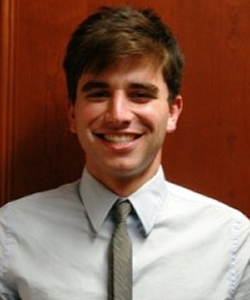
Jordan Romanoff
Jordan Romanoff (SFS'12) graduated from Georgetown's School of Foreign Service in 2012 with a major in culture and politics. He wrote for the Berkley Center's Junior Year Abroad Network while studying in Madrid during spring 2011.
In much of the United States, it is the norm for teenagers to be exposed to a diversity of ethnicities, cultures, and religions. Even in the Midwest, where I grew up, there exist ethnic and religious communities from all parts of the world. Since arriving in Madrid, Spain I have come to realize that this exposure to various religions is not the norm here for the teenagers or the general populace. I had studied Spanish culture before my arrival, and knew that almost 95 percent of the population had been baptized as Roman Catholics; however, I did not realize what that meant in terms of exposure to religious diversity.
I was raised in the Reform Jewish tradition and had a bar mitzvah after my thirteenth birthday. The percentage of the United States that is Jewish is not large, a mere 2 percent. However, that 2 percent has made its presence known through films, food, and other cultural expressions.
At one point after my arrival, my host mom asked me about my religious practices. When I told her I was Jewish, she was fascinated. It is almost as if I was an artifact that one would find in a museum. In later conversations, it was discovered that I was the first Jew that my host brothers had ever met.
In Spain, the current Jewish percentage is roughly 0.12 percent, so it is not surprising that my host brothers had not been exposed to the Jewish tradition other than through their academic endeavors. However, I have to wonder what kind of impact the extreme religious homogeneity has on their society?
In modern Spain, the population—rather infamously—does not participate regularly in religious services. A large portion does not attend Mass, and the younger generation, on average, has ignored the Church’s stances on matters such as sexual orientation or pre-marital sex. However, the Roman Catholic traditions still define much of their value system.
My host brother will be spending the 2011-2012 academic school year in Paw Paw, Michigan as part of an exchange program. Although Paw Paw is by no means a mecca for cultural and religious diversity, what is it going to be like for him when he is surrounded by those not of the Roman Catholic tradition? When he encounters students of other religions, how easy will it be for him to accept their difference?
This is obviously not a question limited to those coming from Spain. Many parts of the world have this same level of religious homogeneity, and their people face the same question when they leave their homes for locations more diverse.
This is an advantage that those from the United States have over the people of religiously homogeneous countries. We have already been exposed, whether it is through personal contact or the media, to the value systems of other groups. As such, encountering practitioners of other religions is not akin to encountering an alien or a museum artifact.
This is not to say that we US students are perfect at accepting difference, as has been shown by the string of gay teen suicides this past year; however, as this generation of young Spaniards head out into the world, we will see the effect of their homogeneous religious background.